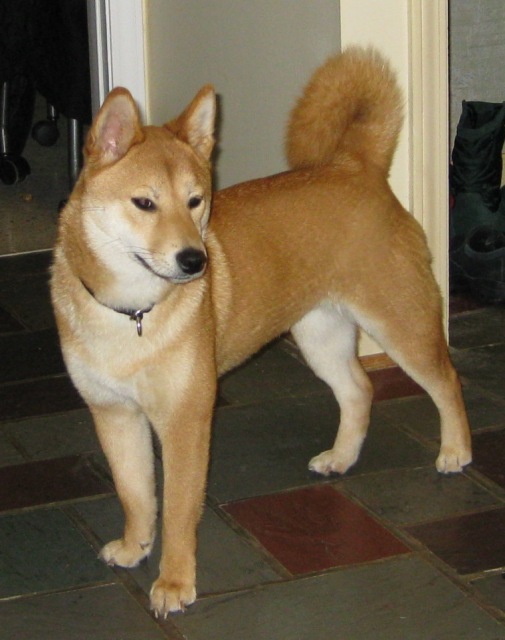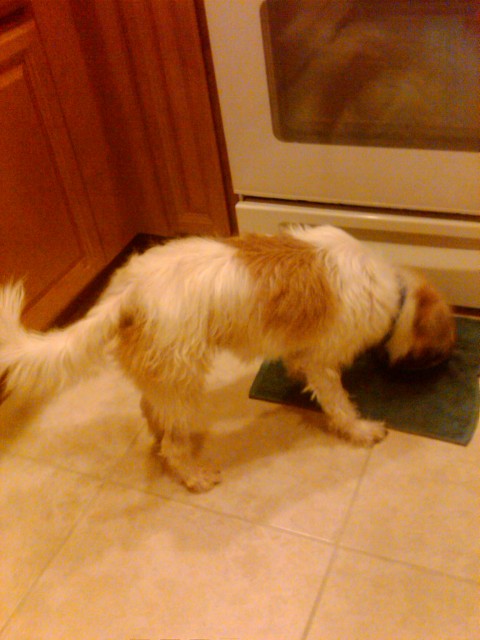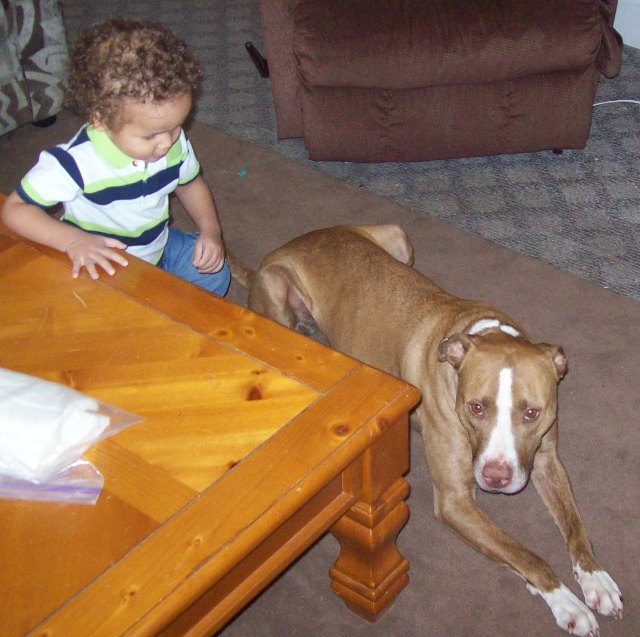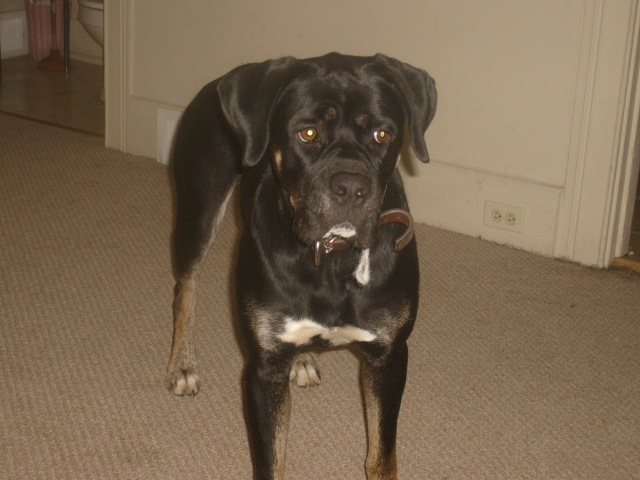QuestionThank you for your expertise, time and attention to my dog's issue- we have had our mix breed male dog for 5 yrs and he has presented with clinging behavior where he follows me from room to room and shows signs of anxiety when we have to leave for work or go out. What can we do to lessen this seperation anxiety?
AnswerHi again, Neven,
Just an update to let you know that a donation was made to Liberty Humane Society in Jersey City, N.J. in the amount of $20 following your rating. Thank you!
Hi Neven,
Thank you for your question.
Dogs are not dissimilar from humans in that they live in social groups (called packs). In the wild, as wolves, dogs' closest ancestor, a wolf left alone without a pack would perish, so it's hard-wired into wolves, and dogs, to have a pack. Dogs and humans comprise a social group and function in similar ways to the pack socially.
This being said, dogs need to learn to be alone. If not taught at a young age, or in a fashion which traumatizes them, separation issues can develop and can sometimes be severe, with escape behaviors on the part of the dogs when his human contingent leaves. Crating a dog may not help, as some dogs will injure themselves trying to escape from the crate.
What I suggest you do, with the assistance of a trainer if needed, is first teach your dog a good, solid "stay." This is a necessary part of teaching your dog to be alone, especially since you have a "velcro" dog who follows you from room to room.
When you have a solid "stay" from your dog, you can start, very gradually, as in seconds and not minutes, to build in some duration and distance. When you're able to do that, highly reward the dog for "staying." Most owners know what their dogs find highly rewarding, and these can be a favorite food, an activity such as going for a walk or playing, affection, or a joust in a backyard. Whatever it is, make "staying" a highly rewarding activity for your dog.
Once you've built in duration and distance in the "stay," start going out of sight, such as behind a wall, for just a moment. At first, don't give your dog time to get upset or break the stay. Do so for a second, and highly reward your dog when you "come back" into view. Try to stay under the threshold that it will take for your dog to become upset as you gradually build in seconds to your disappearing time. Listen for movement - this is often the first sign, when a dog shifts position, that the dog is becoming upset, before the dog starts to vocalize, and you can often hear a shift in the dog's position.
If your dog "stays," again, highly reward. If he isn't able, even for a second, then go partially out of view and not fully, and build up to going fully out of view.
Another aspect to address is the classical conditioning component. That is, it's usually the leaving routine to which dogs respond and during which anxiety builds - getting showered, getting into clothes, coffee, grabbing the keys and the pocketbook (the last of which is usually the most anxiety-provoking for dogs). Over a week-end or at other times when you're home and don't actually need to leave, run through the routine with all the cues that might be relevant to your dog that you're leaving - and don't leave. Doing so will help to reduce the anxiety-provoking aspect of this classical conditioning.
What may help, too, is leaving a television or radio on when you leave to keep your dog company. Other dogs can funtion as company for an anxious dog, but in many cases don't fully alleviate the anxiety of their human leaving.
Although I sometimes recommend leaving a stuffed Kong or other goodie with an anxious dog, I would NOT recommend leaving the dog with any food or toy item if in the company of other dogs, as a fight over the resource could ensue between the dogs, unless you can separate the anxious dog from the others.
Keep your comings and goings low-key. Many owners feed their dogs' anxiety with long leaving rituals, followed by a "reunion" when they return replete with exclamations, hugs, and kisses for the dog. Refrain from doing this, as it only reinforces anxiety in a dog. When you return, treat your return as if you just left, ignoring the dog for several minutes until you see that your dog is calm. Then, when you greet, do so in a low-key manner. When you leave, it's not necessary to pet your dog or even to say "good-bye." Simply leave. Your dog won't love you any less for it, I promise; and, doing so may go a long way in lessening the anxiety.
Here are a couple of books that may help, too. One is called "Dogs Home Alone," by Roger Abrantes. Although the wording is a little awkward in the book, probably due to the fact that English is not Abrantes's first language, the advice in it is sound. Another is "I'll Be Home Soon," by Dr. Patricia McConnell, and it's a short book which will also give you great advice.
Last, but not least, especially for dogs who may become ill or harm themselves as a result of severe anxiety, you may want to explore a pharmacological intervention. Consult your vet, who will probably prescribe "Clomicalm" (Clomipramine HCl). This medication is used to reduce or eliminate many of the separation anxiety behaviors that plague dogs. However, it is not a Magic Pill, and even if you use it, you will need to do the training and behavior modification as outlined above if you hope for it to have the full effect, and if you hope to wean your dog off the medication at some point, which I would recommend.
If you have any other questions about this, feel free to follow-up. Please remember to rate my response here at Allexperts.
Thanks again for your question!
Best regards,
Madeline Friedman, M.A.
Volunteer at AllExperts

 Redish bump between dogs toes
QuestionHello I have a three year old Australian Shephe
Redish bump between dogs toes
QuestionHello I have a three year old Australian Shephe
 Rescued Shiba with ISSUES
Question
Shredder
Kristin,
I consider myself an experie
Rescued Shiba with ISSUES
Question
Shredder
Kristin,
I consider myself an experie
 How do I groom my mixed breed terrier?
Question
Oliver
Hi Susan!
I recently rescued a wonderfu
How do I groom my mixed breed terrier?
Question
Oliver
Hi Susan!
I recently rescued a wonderfu
 my older dog is house broken but not
QuestionQUESTION: I got a 9 yr old dog from a shelter a
my older dog is house broken but not
QuestionQUESTION: I got a 9 yr old dog from a shelter a
 What is my dog
Question
This is the mystery do
a year ago a 11month ol
What is my dog
Question
This is the mystery do
a year ago a 11month ol